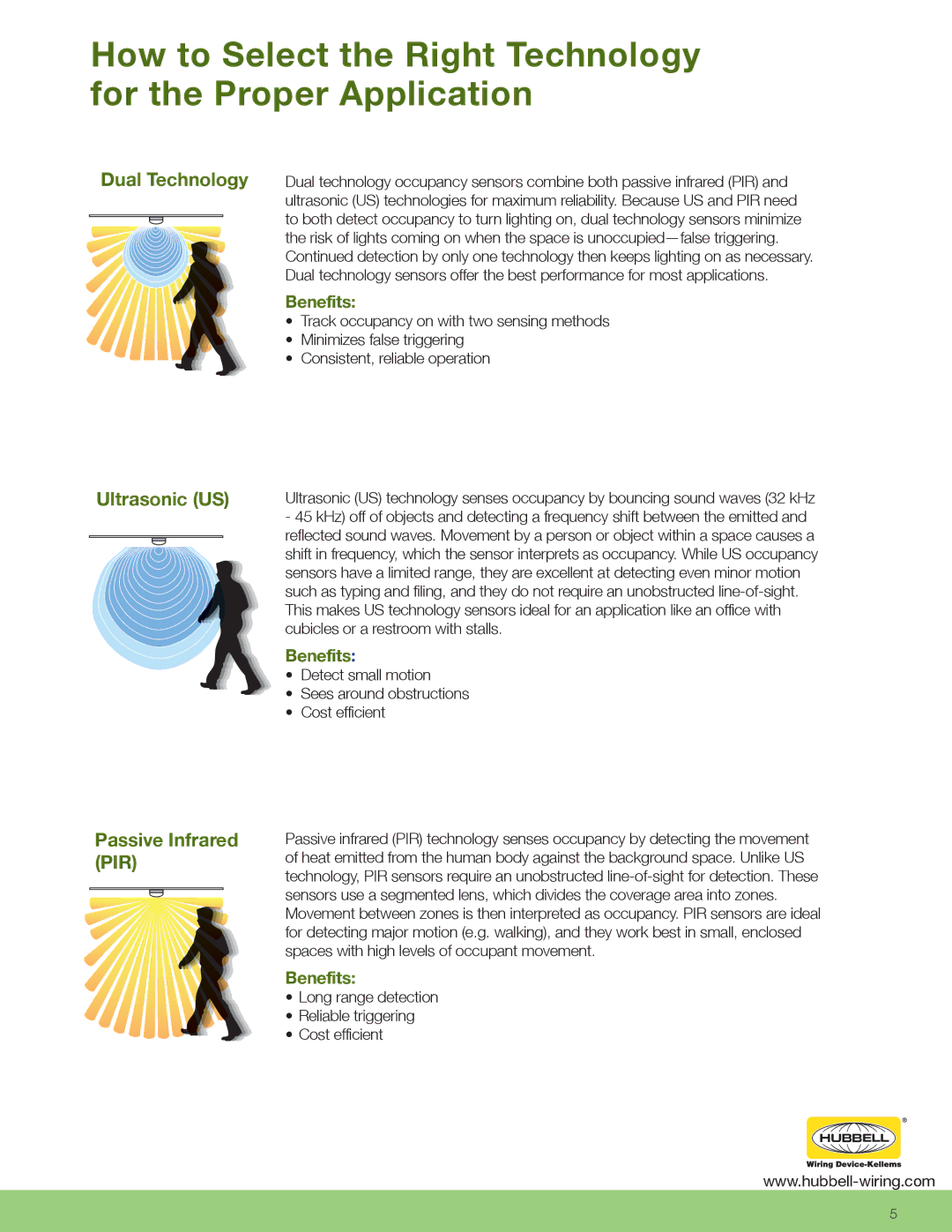
How to Select the Right Technology for the Proper Application
Dual Technology Dual technology occupancy sensors combine both passive infrared (PIR) and ultrasonic (US) technologies for maximum reliability. Because US and PIR need ![]()
![]() to both detect occupancy to turn lighting on, dual technology sensors minimize
to both detect occupancy to turn lighting on, dual technology sensors minimize
the risk of lights coming on when the space is
Benefits:
•Track occupancy on with two sensing methods
•Minimizes false triggering
•Consistent, reliable operation
Ultrasonic (US)
Ultrasonic (US) technology senses occupancy by bouncing sound waves (32 kHz
-45 kHz) off of objects and detecting a frequency shift between the emitted and reflected sound waves. Movement by a person or object within a space causes a shift in frequency, which the sensor interprets as occupancy. While US occupancy sensors have a limited range, they are excellent at detecting even minor motion such as typing and filing, and they do not require an unobstructed
This makes US technology sensors ideal for an application like an office with cubicles or a restroom with stalls.
Benefits:
•Detect small motion
•Sees around obstructions
•Cost efficient
Passive Infrared (PIR)
Passive infrared (PIR) technology senses occupancy by detecting the movement of heat emitted from the human body against the background space. Unlike US technology, PIR sensors require an unobstructed
Benefits:
•Long range detection
•Reliable triggering
•Cost efficient
5
